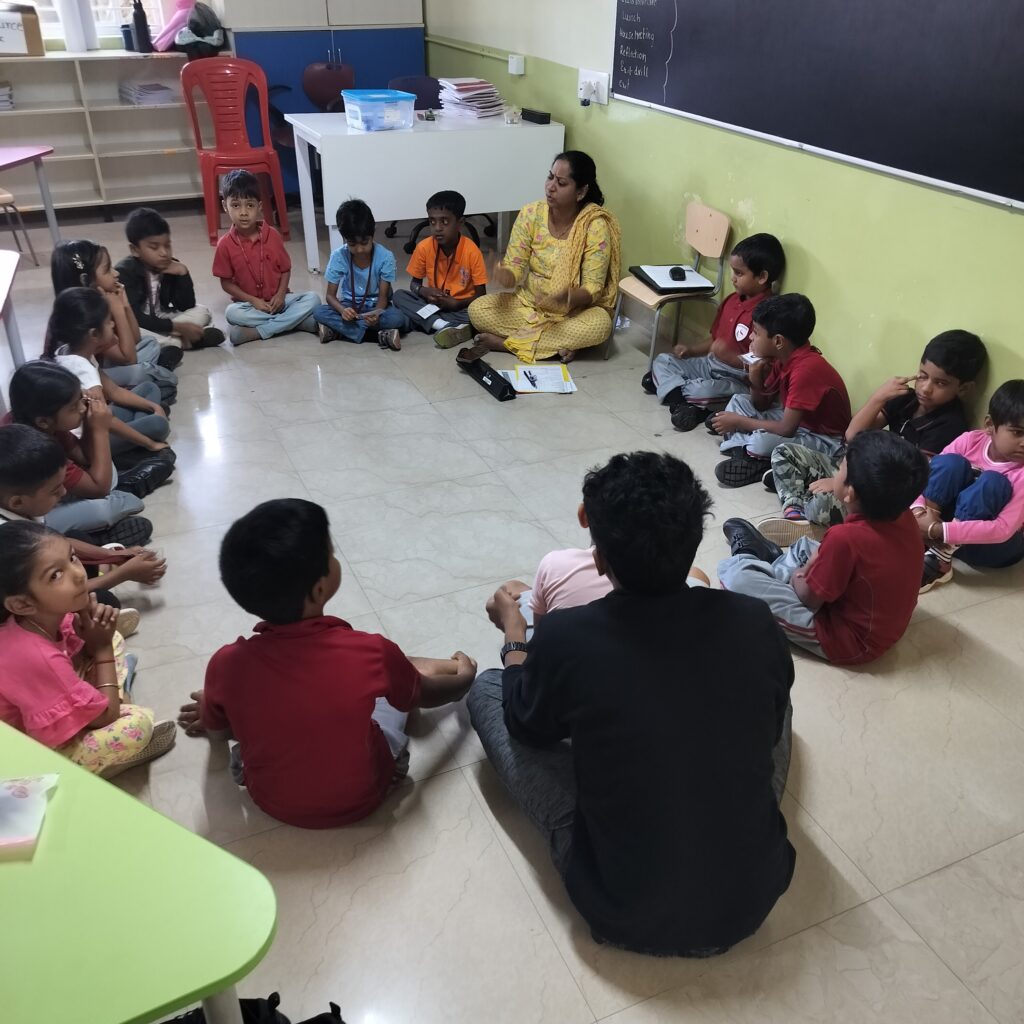Author – Divya G, Head of Preschool and Primary

Exams are always scary to many of us. Even now, I am afraid to take up a course because it will have exams, and I don’t want to score less than my previous marks. Often, the success of learning is tied to the score, and many of us take pride in that. It was a revelation to find that most adults continue to think this way.
However, if that were true, why do employers question the capabilities of degree holders in being job-ready and why is it a challenge to train them? If grades or marks in final exams truly measured success, then graduates should be competent in their respective fields. Why is that not the case?
We may already have some answers and the question should be: what’s the way forward?
“Marks should always be a byproduct of learning, not the only goal.”
Schools have, somewhere along the way, become training centers for scoring well in board exams that come after 12 or 13 years of schooling. Parents start treating every exam from Grade 1 as a mock for that final exam 10 years later. But can all exams be treated this way? The educator in me says no, because the child is not yet ready to understand the seriousness. Parents may even push their children to spend more time on studies during exam season. But can learning happen overnight?
Learning is always a journey. It involves acquiring knowledge, practicing skills adequately and developing behaviors. Expecting this depth of learning to happen within a few days seems impossible.
Given that behavior modification is a slow process, how can we truly achieve meaningful learning?
Since learning is continuous and multifaceted, one important aspect is assessment. Exams are one form of assessment, and they are, by nature, judgmental.
Why assessments?
Assessment measures progress and the success of learning acquisition, so it is important. Without knowing the level of learning achieved, the process cannot move forward. This makes assessment a tool for further learning—what is called Assessment for Learning.
Now the question arises: how do we do this? The first step is to recognize that assessment data conveys important information to multiple people: the teacher, the student, the school as an institution, and finally, the parents.
The teacher:
Assessment data collected after each test shows how effective the teaching-learning process has been. If most students answer as expected, the teacher’s method is considered successful. If not, it indicates that the teaching of the module needs improvement. Using this insight, teachers can offer a different learning experience tailored to their students’ needs. Another assessment can then verify whether the new approach works. Since teachers may have different expectations for each student, some of these may not be met initially. Feedback can nudge students toward the desired outcomes. Students are given time to work on feedback and are evaluated continuously until they meet the expectations and demonstrate the learning as behavior. When a child achieves the expected behavior, what next? It’s not an endpoint. The teacher then sets new goals, creating a customized learning plan for each learner.
The student:
Ultimately, the responsibility for learning lies with the student. A student should track their own progress and set personal expectations. It may seem impossible for children under 10, but with ongoing feedback and guidance from teachers, even young learners can manage this. Think of how babies, just months old, set expectations for themselves as they try to crawl, stand, or walk. Assessment feedback offers students a chance to identify mistakes, evaluate progress, see results, and set new goals.
The school:
The data collected by teachers can lead to changes in school policies or logistics, as the readiness to learn mainly depends on the teaching-learning environment that the school provides.
The parent:
Parents come last in Assessment for Learning. As mentioned, the responsibility to learn lies with the student; guiding and setting expectations is the teacher’s role; facilitating the learning environment is the school’s role. Parents should always stay informed about communications between teachers, schools, and students. They should also create opportunities for extended learning outside of school.
Whenever a parent doubts the teacher’s plan, the child may miss opportunities or get confused. Being aware of the teacher’s expectations and the child’s own progress equips parents to engage in meaningful conversations to help the child meet those expectations.
Marks:
Marks or grades do matter, as they qualify children for many opportunities. My point is that if a child experiences this learning journey starting at age 6 in a fear-free environment, by the time they become teenagers, they will already have the ability to manage their own practice through self-evaluation and seeking feedback. They will also be able to select resources and set goals independently. Parents (including teachers, in this context) then become supporters of their dreams—not just the marks. The marks will simply follow.
